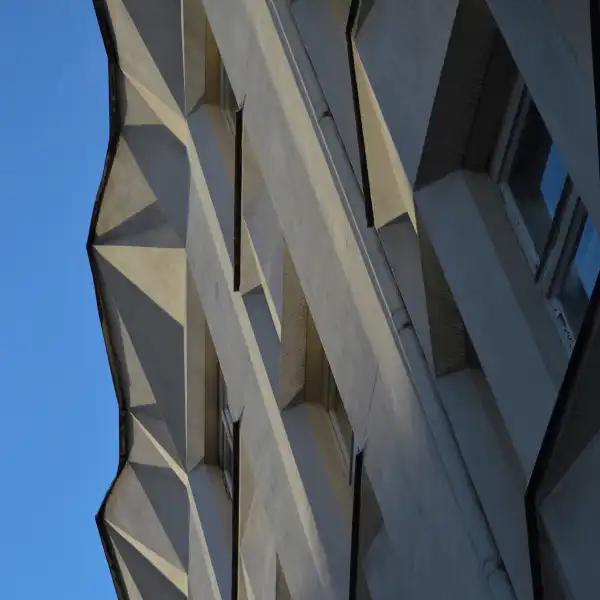Inner Courtyard Route
Stories of Prague's architecture
What urbanistic connection do Vinohrady, Dejvice, Karlín, and Žižkov have? It’s the block structure! This tried and tested method of building a city has proven itself in Prague to such an extent that it has come to define the city to some degree. In this world of blocks that encircle the historic center of Prague like a belt, we can still find plenty of differences in how buildings adapt to local conditions, terrain, and the nature of the local residents. However, they all have one thing in common. For a block to be a block, it must inevitably have its own inner courtyard. One may be tidy and full of greenery, another may be filled with garages and covered in asphalt. Another may have transformed from an empty yard into a picturesque café, while others continue to primarily serve the people who live in the block. Let’s take a closer look at this distinctive phenomenon in Prague and explore how even seemingly identical block cities can undergo transformation.

Duration:
56 minut
Number of stops:
4+4
Lenght:
4,2 km
MHD start:
Florenc
MHD end:
Bohemians
Karlín Barracks
Architect: Vojtěch Lanna starší
Year of completion: 1848
The building of the Karlín Barracks was initiated by dissatisfied soldiers who were forced to spend the night in Prague. They were often accommodated in former monastery complexes or vacant houses in the Old Town and New Town. And so, a plan was conceived to construct barracks with a capacity of 2,000 men. The building served its purpose partially until 2004 when, after the abolition of compulsory military service, it became vacant. Over time, the building lost all functions and became entangled in an endless conflict of interests among various ministries that owned the building over the years. A spark of hope came in 2017 when the Prague Center association took over the central area and the economic building, which forms the fourth side of the inner courtyard. The complex gained cultural and leisure activities such as a summer cinema, fire pit, playground for children, and sauna. The space was also revitalized by art installations by renowned Czech sculptors František Skála Jr. and Čestmír Suška.
The operation of the barracks was suspended from June 2024 to May 2025 following a controversial decision by the building office. But now, after persistent efforts of the operators and supporters, the place is coming back to life!

Žižkov Atrium
Architect: Není znám
Year of completion: 1719
The small church of the Exaltation of the Holy Cross stood a few kilometers beyond the newly constructed Baroque walls of Prague at the time of its creation. It was surrounded only by a plague cemetery and a few homesteads. In the second half of the 18th century, it was damaged due to an invasion by Prussian troops. Since then, the church fell into disrepair, and as burials ceased in the adjacent cemetery, the chapel was also destroyed. Gradually, a town began to grow around it, and in the 1960s and 1970s, extensive efforts were made to transform the former sacred building into a facility serving the residents, which succeeded in 1984. Since then, Atrium in Žižkov has become a meeting place, hosting concerts and exhibitions. The church features a Baroque gable with volutes and a monumental sandstone portal. A modern extension has been added to the church, where a gallery and café are now located. In the local atrium, you will also find an artistic fountain. At the entrance, you will be greeted by a sculpture of a sitting girl and an expressive quote by Jan Werich.

Purist Block of Houses
Architect: František Albert Libra
Year of completion: 1927
The ensemble of modernist buildings in the style of purism consists of a total of 18 uniformly designed buildings that differ only in minor details and their relationship to the inner courtyard. The entire project is led by architect František Albert Libra, who had previously designed the rondocubist colony Svoboda in the nearby Vinohrady slope. The block has two parts enclosing a spacious inner courtyard, which features numerous trees and greenery, as well as playgrounds for children, a basketball court, and relaxation areas. The stylistic purity of the buildings, which is characteristic of purism, is particularly evident in the design of the entrance portals, staircases, and long rows of balconies, which face the southern side despite the block layout of the surroundings. This is an urbanistic rarity, and the entire massive structure is a testament to progressive solutions and an unconventional approach to block construction at that time.
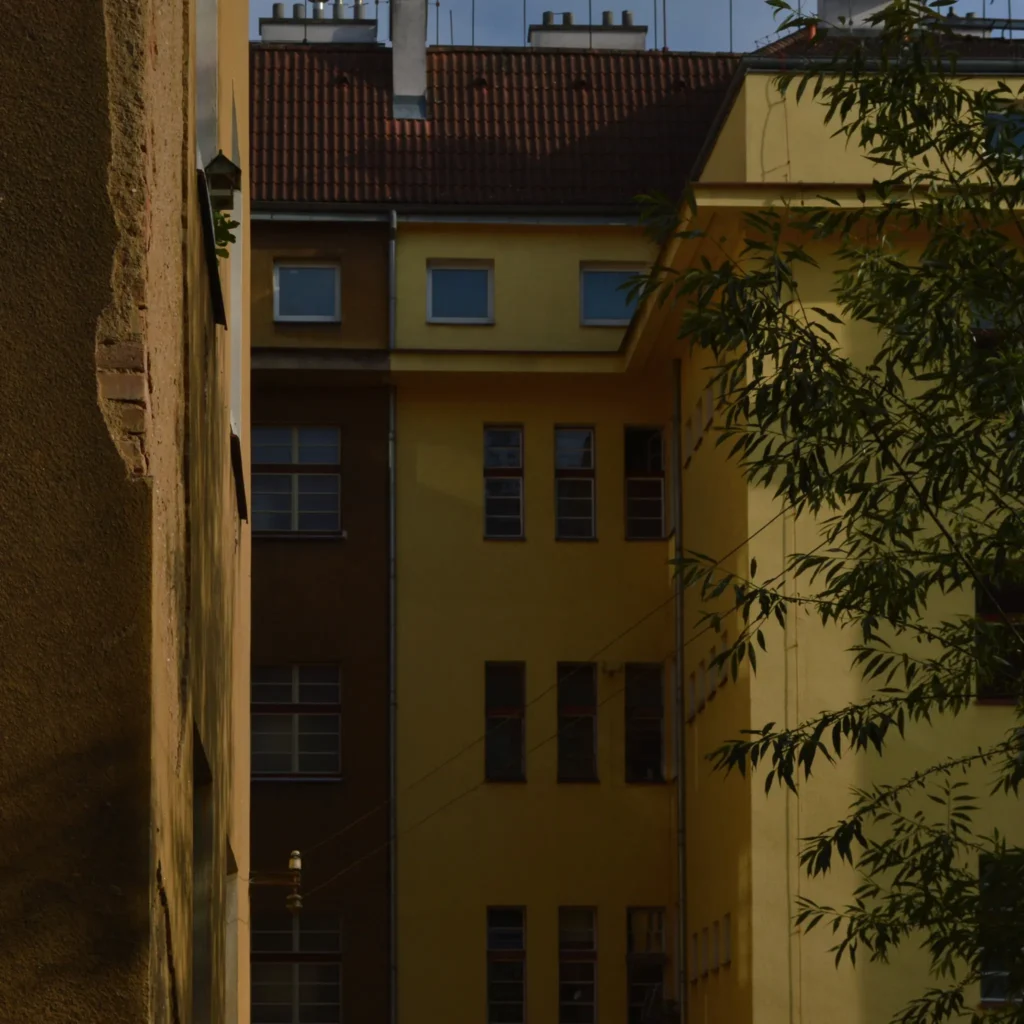
Petrohradská Collective
Architect: Josef Domek, bratři Kalichové
Year of completion: 1902
In 1902, Vršovice obtained the status of a city, and in the same year, the Waldes Koh-i-noor factory for the production of famous pencils and other stationery was opened. Craft production gave way to industry, and with gradual industrialization, the appearance and character of the area changed. In 1903, a mill with a bakery was established in what was then Brožíkova Street, now Petrohradská Street. However, in 1937, instead of sourdough, cocoa beans were brought into the corner building, and the mill was replaced by a chocolate factory. In the 1950s, the chocolate factory and a candy store gave way to an assembly workshop. At the beginning of the 21st century, the building lost its purpose entirely. In the future, a residential new building is planned for the corner, but until then, Petrohradská Kolektiv breathes life into the abandoned building. This initiative revived the worn-out Neo-Renaissance facade with black and white silhouettes, but more importantly, it found temporary use for the interior spaces. It fills the individual rooms and inner courtyard with culture and creative people.
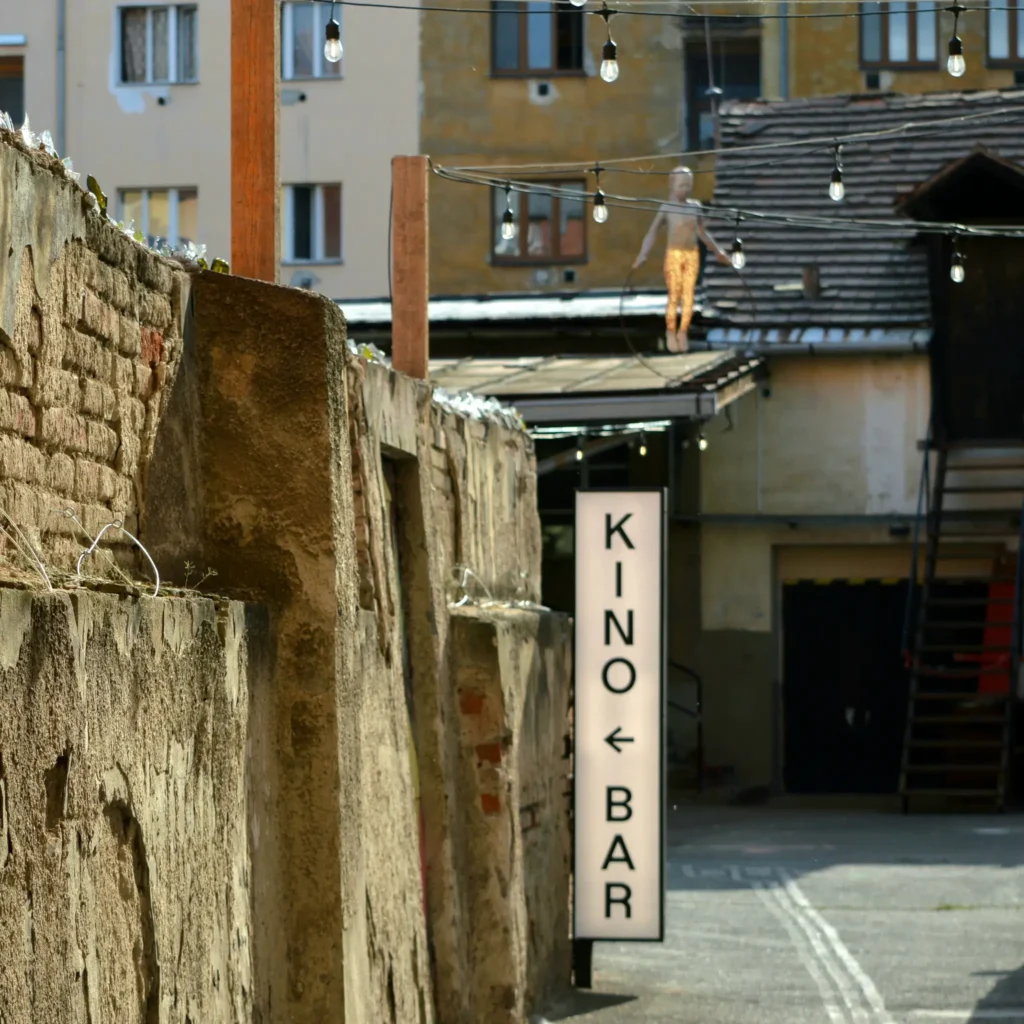
Zastávky mimo trasu
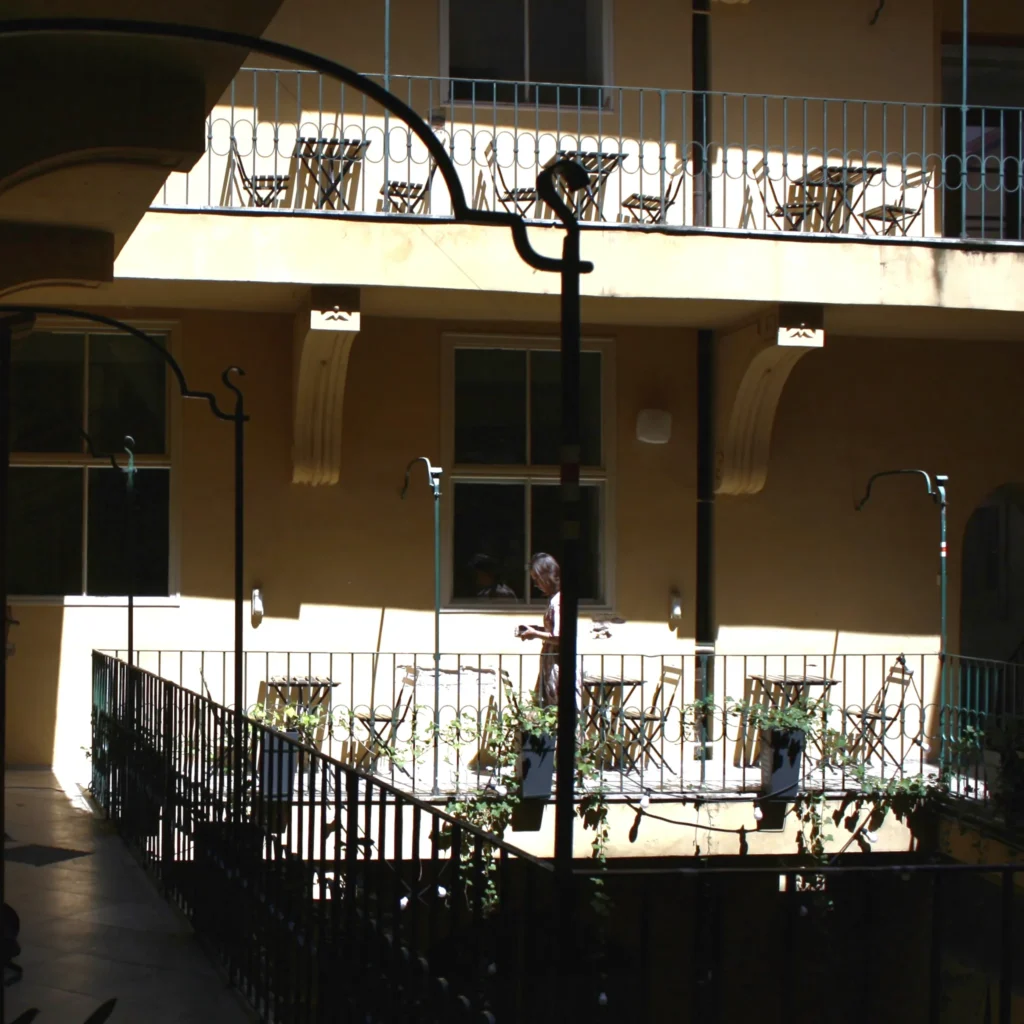
Scout Institute
Architect: Není znám
Year of completion: dům U Minuty 15.století, dům U Zlatého rohu 17. století
In close proximity to the Prague Astronomical Clock, hidden between two historic buildings, lies the inner courtyard of the Scout Institute and Prague Creative Center. Inside the buildings of U Minuty and U Zlatého rohu, a space for gatherings, cultural events, and the headquarters of several organizations has been created. However, culture did not always reside here. The originally Gothic, now Renaissance-style, U Minuty house with its famous sgraffito facade used to be a pharmacy, and Franz Kafka even lived there for a while. The neighboring U Zlatého rohu house is built on medieval foundations that were later merged into a Renaissance palace. Its Baroque appearance was added about a hundred years later, and in 1801, the house was complemented by some Neoclassical details, such as a polygonal oriels on the corner of Malé and Staroměstské Square. The latest modifications according to the design by architect Pavel Janák took place in the late 1930s, and the changes are mainly visible in the upper floors.

Super Tramp
Architect: Není znám
Year of completion: 19. století
As part of the so-called Vilímek Passage, connecting Spálená and Opatovická Street, there is an inner courtyard where the scent of coffee fills the air, and the literary history lingers. The passage was built in the 19th century by Josef Richard Vilímek, who had his publishing house and bookstore in the surrounding buildings. The business gradually gained a great reputation and became one of the most significant in the country. For example, it was the first to publish a Czech translation of Vinnetou. In the mid-20th century, Vilímek’s company was nationalized and subsequently liquidated, and the buildings were taken over by the central book distribution company. Since 1996, a section of the building has been occupied by the Higher Vocational School of Journalism, and in the inner courtyard, you will find Super Tramp Coffee. The majestic Neoclassical buildings around are complemented by a front terrace adorned with Doric columns. At the entrance to Opatovická Street, you can still see the inscription “Nakladatelství Jos. R. Vilímek” on the facade, commemorating the most glorious era of this building.
Unfortunately, this unique place will soon disappear from the café map of Prague. The whole house will undergo a major renovation and the last coffee you can enjoy here will be on July 31, 2024. Thank you for many great coffees. We will miss you.
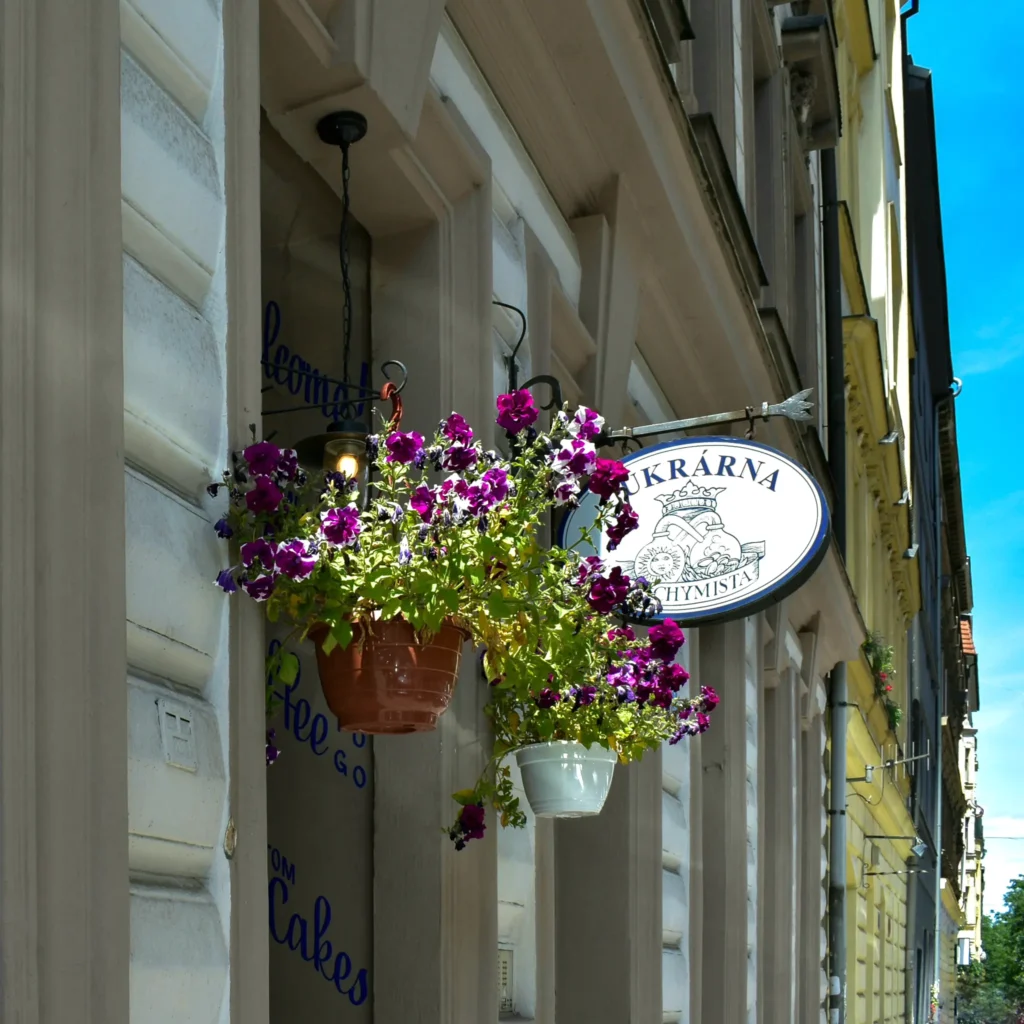
Alchemist
Architect: Není znám
Around a quarter of a century ago, the idea to establish a contemporary ornamental garden in the courtyard of a residential block on Jana Zajíce Street came to the artist and gallery owner Kateřina Ebelová, who wanted to beautify the neglected space between the buildings. The 650 m2 plot underwent demanding landscaping, with the addition of deciduous and coniferous trees, shrubs, flowers, and two ponds. Even the facades of the surrounding buildings are green. The plants that climb them serve not only as decoration but also as a home for countless insects and birds. All the vegetation here is labeled with the name of the plant. Underneath the tree canopies, there are also artworks that aim to evoke the atmosphere of the local neighborhood. At one time, it was even nicknamed “Letná Montmartre” or “Letná Republic of Artists” due to the presence of artists who lived here.
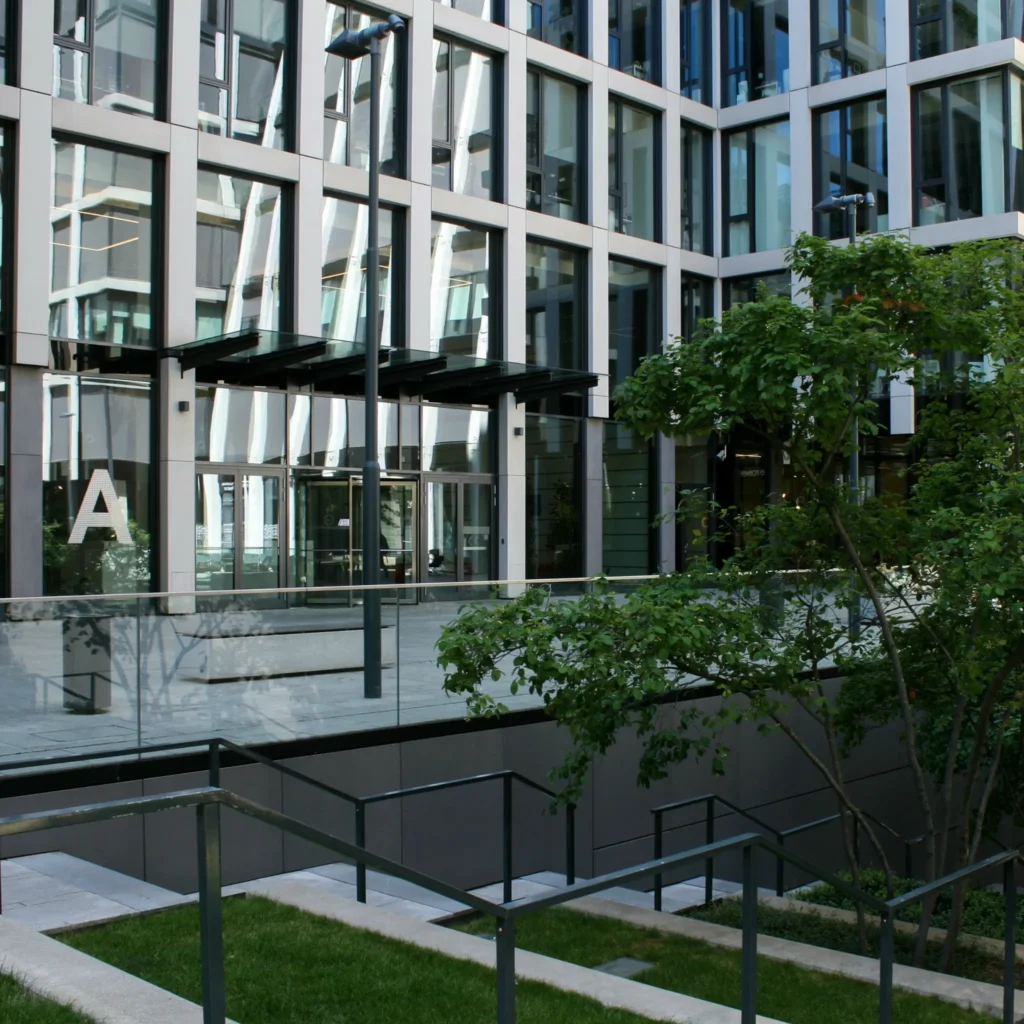
Florentinum
Architect: Jakub Cigler Architekti
Year of completion: 2013
The history of the block between Na Poříčí and Na Florenci streets was most significantly marked by the construction of Masaryk Railway Station in 1845. This transformed the block, previously dotted with small gardens owned by affluent bourgeoisie, into a transportation hub of Prague. On one of the plots directly opposite the railway tracks, there originally stood a monumental Neo-Renaissance building with an art gallery and luxury apartments. However, it was demolished in 1983, along with other smaller buildings along the street front, to make way for an even more massive structure, the building of Rudé právo. Just when one might think that constructing a larger building within the block would not be possible, in 2012, the investment group Penta came up with the idea to build the new administrative palace called Florentinum. The resulting inner courtyard, named Piazza, is surrounded by the glass facade of the new building, and one side is also enclosed by Desfourský Palace.

Garden route

Feminist route
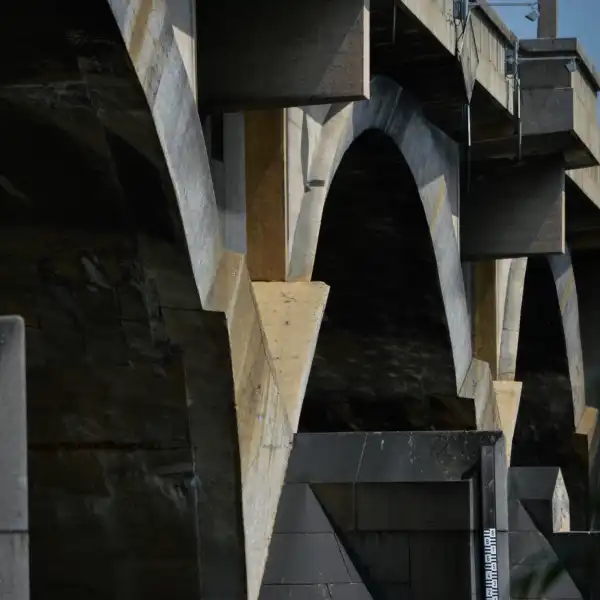
Bridge Route
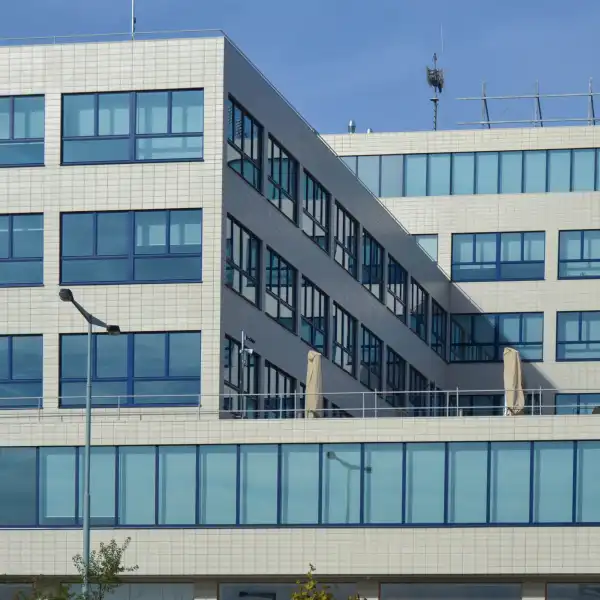
Functionalist Route

Passage Route
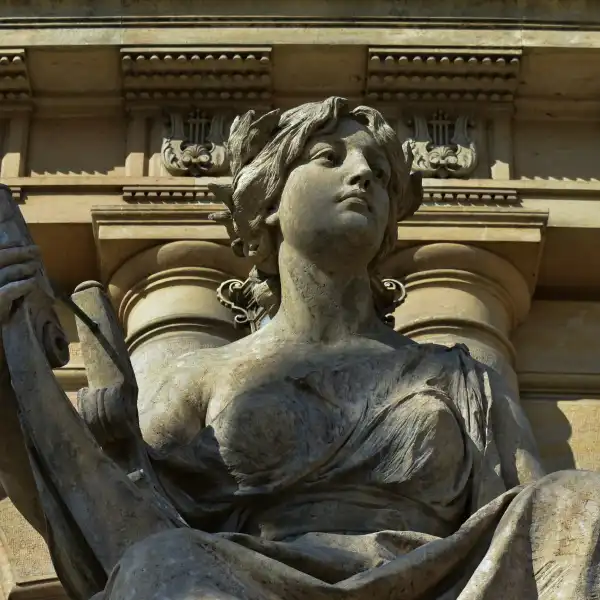
Music Route

Church Route (1930s)

Prager’s Route

Glass Route

Empty Route

Literary Route

Brutalist route
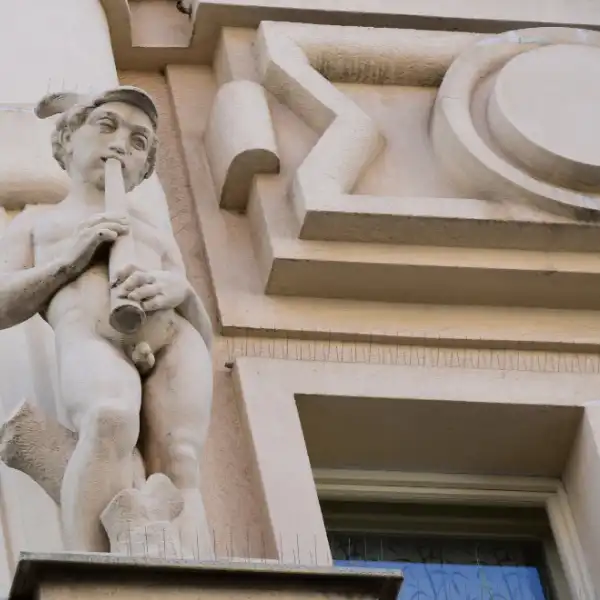
Rondocubist route
